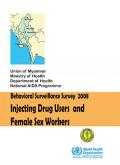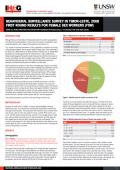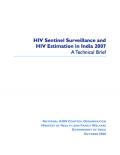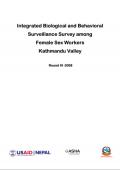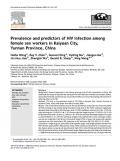Publications on Female Sex Workers (FSW)

Resource | Publications,
In 2003 the Bill & Melinda Gates Foundation began its large HIV prevention program, the India AIDS Initiative, later called Avahan, to curtail the spread of HIV in India. At the time, there was an understandable sense of urgency about the rising prevalence of HIV in the world's second most populous country.

Resource | Publications,
As yet, little information is known about the size, distribution, and characteristics of IDU and sex worker sub-populations in Afghanistan. Therefore, the World Bank (WB) agreed with the Ministry of Public Health (MOPH) to contract with the University of Manitoba (UM) to conduct an assessment of these three key, high risk populations in three cities of Afghanistan: Mazār-i-Sharif, Jalalabad, and Kabul.

Resource | Publications,
By the beginning of the new decade, a number of organisations had begun working on HIV and AIDS, though not yet in a formally coordinated manner. The Joint Programme on AIDS in Myanmar 2003–2005 was an attempt to deliver HIV services through a planned and agreed strategic framework.






